- September 09, 2015
- By Karen Shih ’09
Take a look back through events that shaped the University of Maryland—including a devastating fire, Testudo’s unveiling and major student protests—starting from its creation as the Maryland Agricultural College.
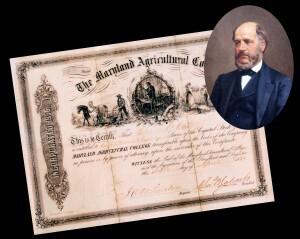
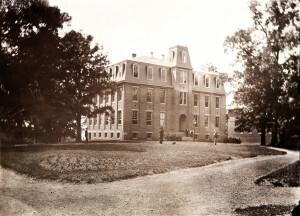
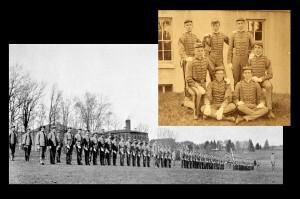
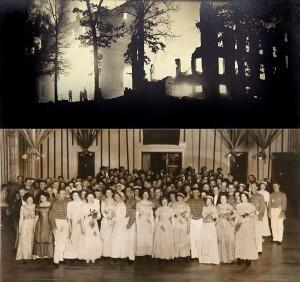

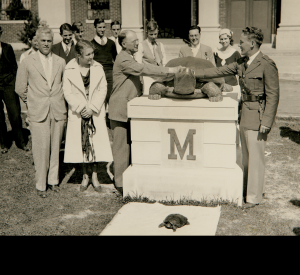
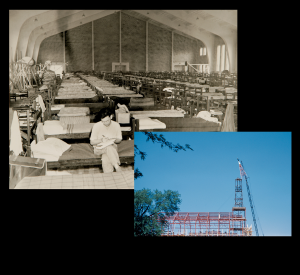
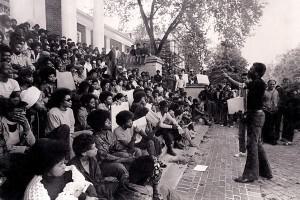
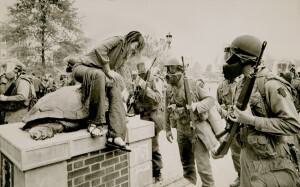

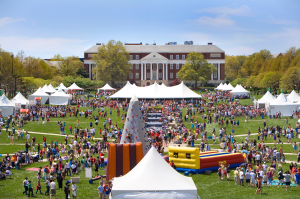
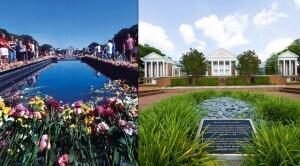
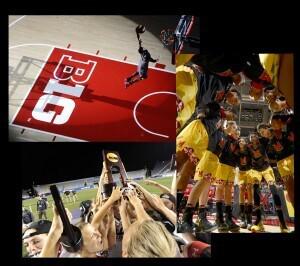
The university was founded as the Maryland Agricultural College (MAC) on March 6, 1856. Charles Benedict Calvert, descendant of the first Lord Baltimore, was central to the college’s creation. He sold his 428-acre Rossborough Farm, part of his vast Riversdale estate, to serve as its home. He served briefly as acting president as well as president of its board of trustees. On Oct. 5, 1859, MAC officially opened with an enrollment of 34 students.
Courtesy of University Archives
The Morrill Land Grant Act was passed in 1862 to provide federal resources for state colleges to teach agriculture, mechanical arts and military tactics (as opposed to the liberal arts that had traditionally been the focus of higher education). The Maryland General Assembly designated MAC as a land-grant institution in 1864. Morrill Hall, built in 1898, is the oldest academic building still standing on campus and was named in honor of U.S. Sen. Justin S. Morrill of Vermont, author of the act.
Courtesy of University Archives
Like many land-grant colleges of the time, MAC was also a military school. Students were known as cadets and wore military uniforms to class and for drill formations.
Courtesy of University Archives
On Nov. 29, 1912, a fire broke out on campus during the traditional Thanksgiving Subscription Dance. The Barracks and the Administration building, which housed all 265 cadets as well as the mess halls, offices and records, burned to the ground. Despite the tragedy, every cadet except for one returned to campus, and the college took the opportunity to reshape itself.
Courtesy of University Archives
Four years after the fire, in 1916, the state of Maryland took control of the college, then known as the Maryland State College of Agriculture. It also admitted women for the first time. Charlotte Vaux (left) completed a two-year degree in agriculture in 1918, and Elizabeth Hook (right) earned a four-year degree in entomology in 1920.
Courtesy of University Archives
The original Testudo statue was unveiled on Class Day on May 26, 1933. The statue was a gift from the class of 1933 and was originally located in front of Ritchie Coliseum. A live terrapin, which served as the model for the statue, helped reveal it by pulling off the sheet covering it (which was attached to the turtle’s shell). The statue made its way to the front of McKeldin Library in 1965, and after being the subject of many school rivalry pranks, it was filled with cement to deter any further kidnappings.
Courtesy of University Archives
In the years following World War II, veterans eager to take advantage of the GI Bill used the Reckord Armory as a dormitory. Memorial Chapel was dedicated in 1952 to honor all students who lost their lives in service to their country.
Armory photo courtesy of University Archives. Chapel steeple construction photo courtesy of Raymond Dilzer.
The first African-American students to earn diplomas from UMD never took classes in College Park—though they did attend commencement on campus in 1951. Instead, they took graduate classes from UMD professors at the Maryland State Teachers College in Bowie, Md. U.S. Rep. Parren J. Mitchell, who became Maryland’s first black member of Congress, was the first African-American student to take graduate classes at the College Park campus. He earned his M.A. in sociology in 1952. Hiram Whittle was the first African-American undergraduate student to enter in 1951, but he never graduated.
Courtesy of University Archives
From 1970 to 1972, UMD student protests against the Vietnam War became so violent that Gov. Marvin Mandel declared a state of emergency on campus and three times sent national guardsmen to restore and maintain order. In May 1970, thousands of students and protesters occupied and vandalized the Main Administration building and the Reserve Officer Training Corps (ROTC) offices, set fires around campus, blocked Route 1 and clashed with riot police. Students threw bricks, rocks and bottles, while police fought back with teargas, riot batons and dogs.
Photo courtesy of Baltimore News American Collection
One of the greatest athletes in UMD history, Len Bias died of a drug overdose less than two days after he was chosen second overall by the Boston Celtics in the NBA draft. His death shocked the nation and spurred a painful era at the university, with the athletic director and basketball coach stepping down within months. Time has healed some of those wounds; Bias was inducted into the Maryland Athletics Hall of Fame in Fall 2014.
Bias photo shooting over Michael Jordan by Larry Crouse. Dunk photo courtesy of University Archives.
UMD’s popular campus-wide open house, Maryland Day, started in 1998. The event brings tens of thousands of visitors to campus for hundreds of free events, including family-friendly demonstrations of research, arts performances, the opportunity to be blown away in the Wind Tunnel and visit an insect petting zoo.
Photo by John T. Consoli
On Sept. 12, 2001, students, faculty and staff gathered around ODK Fountain on McKeldin Mall to pay tribute to those who lost their lives in the terrorist attacks the previous day. The flowers were later buried beneath a memorial plaque and garden across from the Main Administration Building.
Photos by John T. Consoli
The university joined the Big Ten Conference in 2014 after decades in the Atlantic Coast Conference (UMD was a founding member in 1953). UMD student-athletes had a great inaugural year in the Big Ten, with highlights including the women’s basketball team going undefeated in conference play and the women’s lacrosse team winning the NCAA championship.
Photos by Greg Fiume
